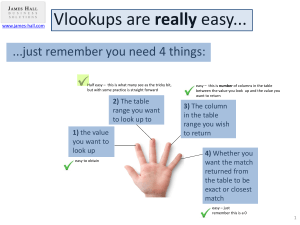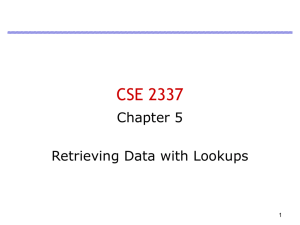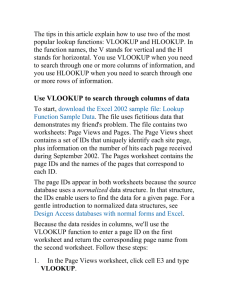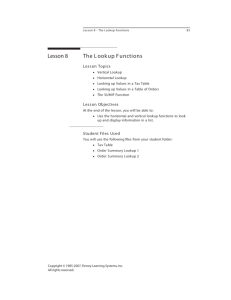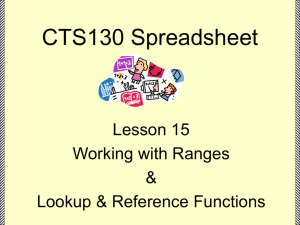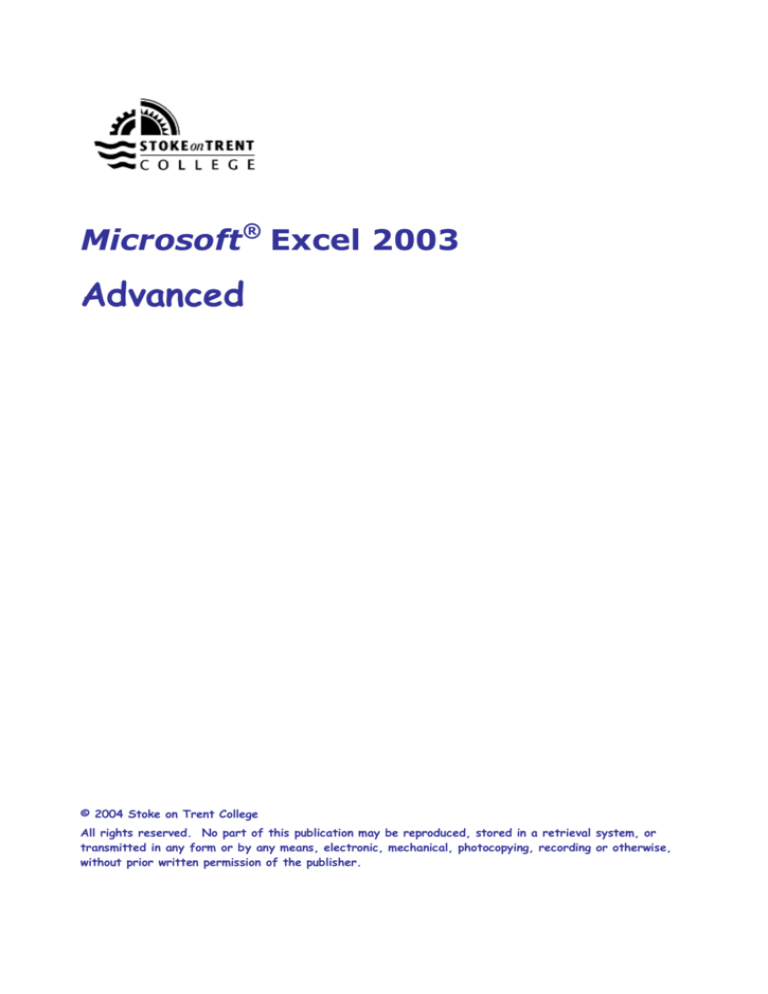
Microsoft® Excel 2003
Advanced
© 2004 Stoke on Trent College
All rights reserved. No part of this publication may be reproduced, stored in a retrieval system, or
transmitted in any form or by any means, electronic, mechanical, photocopying, recording or otherwise,
without prior written permission of the publisher.
Excel 2003 Advanced
Wendy Wiggins
Page 1
Excel 2003 Advanced
VLOOKUP AND HLOOKUP
When discussing absolute cell addressing, we looked at the issue of cells in an Input
area as being suitable for using the absolute facility. For a larger list of items, it
may be more useful to use the LOOKUP Functions in Excel – VLOOKUP and
HLOOKUP (Vertical and Horizontal Lookup tables).
The input area consists of a table with the item name or a code as the first column
or row. Other columns or rows can be details such as description of the goods,
price and discount rate. It is important to ensure that the first column is sorted into
ascending alphabetical/numeric order.
A
1
2
3 Cash Order
4
Order Value:
5
Discount
6
Net Value
7
8 Credit Order
9
Order Value:
10
Discount
11
Net Value
B
C
D
E
Discount Lookup Table
Order Value
0
500
1000
5000
10000
600
10%
Cash
5%
10%
15%
20%
25%
F
Credit
0%
5%
10%
15%
20%
In this example the formula in the Discount cell is =VLOOKUP(B4,D4:F8,2)
This says: Using the V(ertical)LOOKUP function [data in columns](find the value in
Cell B4, looking in the range D4:F8, column 2).
Excel goes to the first column of the range D4:F8 (this can be a named range) and
looks for the value shown in cell B4. It finds the next value above the required one
(1000) and returns one row (500). Once in that row, it looks across to the column
number 2 (Cash values) and inserts that data in the Discount cell (B5).
If you decide to name the table, do not include the column or row headings in the
named range.
The example of a LOOKUP table above has data arranged in columns (VLOOKUP). It
is also possible to have a Horizontal (HLOOKUP) table, with the data arranged in
rows:
Order Value
0
500
1000
5000
10000
Cash
5%
10%
15%
20%
25%
Credit
0%
5%
10%
15%
20%
Wendy Wiggins
Page 2
Excel 2003 Advanced
As we have seen, the LOOKUP function searches
to the row above
PMT and other financial functions
Group and Outline
Sub Totals
Auditing Worksheets
Pivot Tables and Pivot Charts
Goal Seek
Manager
Solver
Macros
Filtering and Sorting Data
Sort, AutoFilter, Advanced Filter and Data Forms
Importing part of your worksheet and a chart into a word report,
Creating links to other worksheets/books
Wendy Wiggins
Page 3

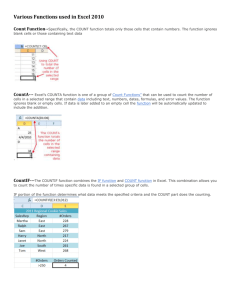

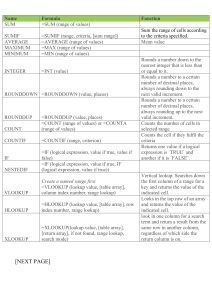
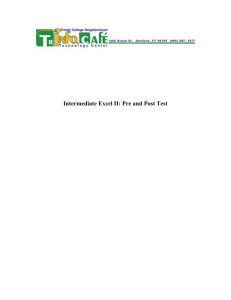
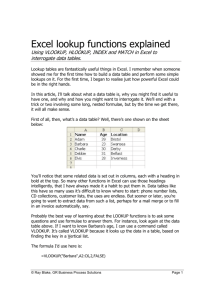

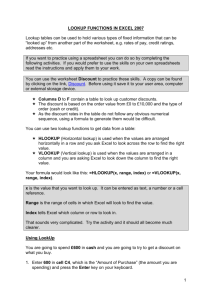
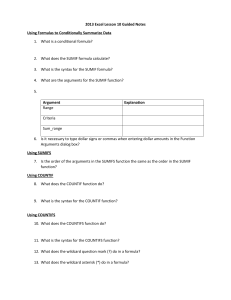
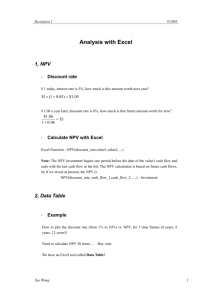
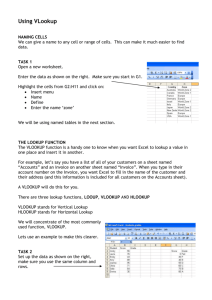


![VLOOKUP ([Score], A5:B10, 2)](http://s3.studylib.net/store/data/007008406_1-329b439ee1a3b5923ce08e77bb280c5d-300x300.png)


